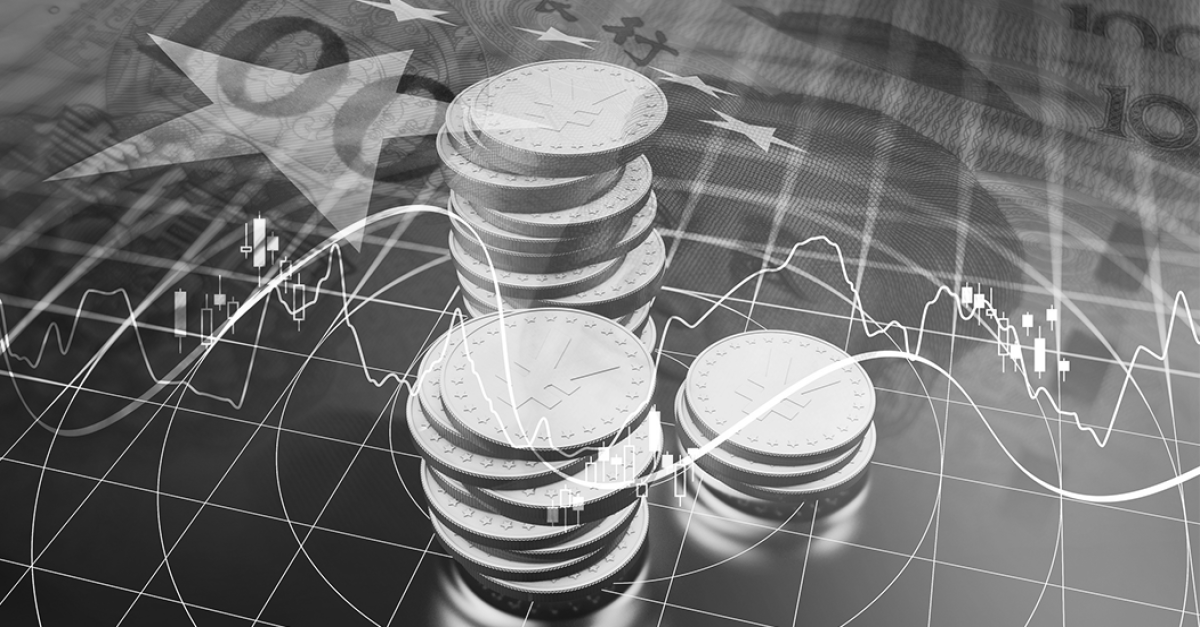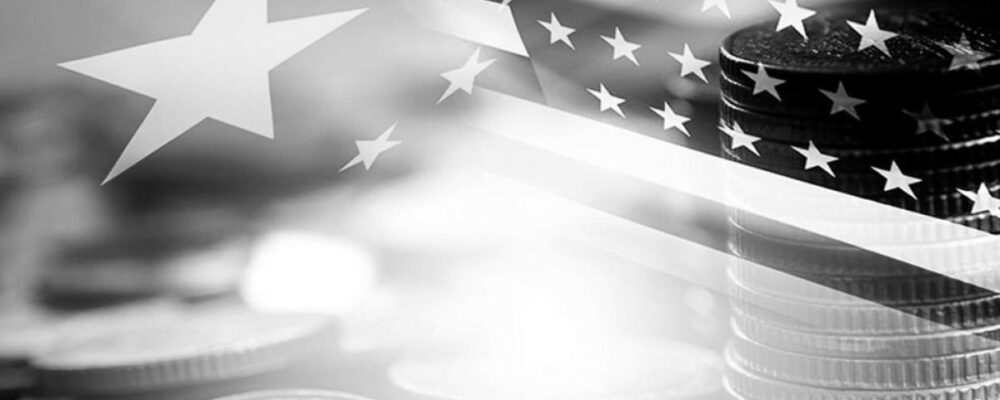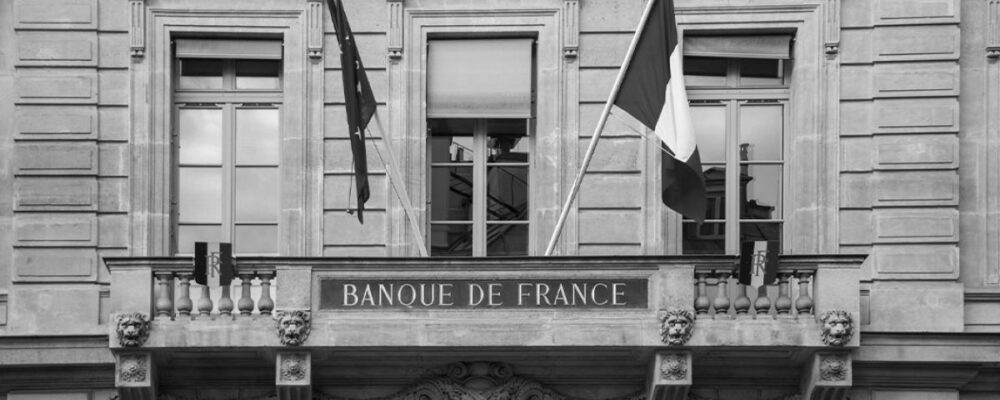An unprecedented package of measures
These measures were expected, but do they go far enough? Following the start of the Fed’s monetary easing cycle and the rally in the yuan over the past month, the PBoC has regained some room for manoeuvre, which it has quickly exploited to support the real estate market.
The first announcement was a 50-basis-point cut in the reserve requirement ratio (RRR) that dictates how much cash commercial banks must deposit with the central bank. According to PBoC Governor Pan Gongsheng, this should mean banks have around 1 trillion renminbi (RMB) ($142 billion) more to play with. However, with property prices continuing to fall and households still opting to pay down their debt rather than spend, there is no guarantee that new lending will increase significantly. In an unusual move, the PBoC said it would consider a further 25-50 bps cut in the RRR before the end of the year. It should be noted that this rate was already cut by 50 bps in February, with little stimulus effect on the economy: year-on-year growth came in at 4.7% in Q2 2024, compared with 5.3% in Q1 2024.
This time around, at the same time as lowering the RRR, the PBoC cut its seven-day reverse repo rate by 20 bps to 1.5%. Meanwhile, the central bank lowered its other key policy rate, the medium-term lending facility (MLF) rate, by 30 bps last Wednesday to an all-time low of 2%. These cuts should entail a 20-25 bps reduction in the Loan Prime Rate (LPR) and deposit rates.
Another key measure is the cut – averaging around 50 bps – in mortgage rates, lowering household debt burden by around RMB 150 million. Once again, the question is whether the resulting surplus disposable income will be spent or saved. This measure – which comes alongside a reduction in the minimum required down-payment for a second home, from 25% to 15% – is aimed at stimulating a real estate market that has thus far remained in crisis despite all efforts to the contrary.
Lastly, Pan Gongsheng unveiled measures aimed at supporting equity markets. First off, the PBoC is offering commercial banks cheap loans to help firms buy back their own shares. Secondly, the central bank wants to set up a swap facility to enable institutional investors to more easily access funding to help them buy shares. The PBoC’s aim is to stabilise stressed stock markets and thus promote investment, particularly in private companies.
These measures are the biggest and boldest since the end of the Covid-19 crisis. The simultaneous reduction in key policy rates and the RRR is particularly notable for being so unusual. At the same time, the PBoC has adopted a forward guidance strategy, announcing potential future measures with the goal of influencing the expectations of economic agents. In this sense, it has sent out a clear message about its determination to support the Chinese economy. This softening of the central bank’s stance is welcome in the current context.
Implications for the yield curve
Yields on Chinese Government Bonds (CGBs) have been flattening since the beginning of 2024. On 1 March, the yield spread between 30-year and 10-year CGBs fell to just 20 bps. On 2 August, the day after the PBoC announced the cut in the seven-day reverse repo rate, ten-year CGB yields fell to an all-time low of 2.1%.
Under normal circumstances, yields on long-dated bonds are higher to reward long-term investment. When they approach the yields on short- and medium-dated CGBs (i.e. those maturing in between one and ten years), this reflects investor pessimism as investors move into long-dated bonds, automatically pushing up their prices and thus lowering their yields. In the United States, the inversion of the yield curve often heralds a recession. In China’s case, it could weaken the yuan and trigger capital flight.
The PBoC seized on this issue, announcing on 1 July that it would be intervening in the CGB market. By selling CGBs with long maturities (20-50 years), the central bank hopes to push down prices and drive up yields; conversely, by buying CGBs with short and medium maturities (up to 10 years), it hopes to push up prices and drive down yields. On the day of the announcement, the yield on 10-year CGBs rose by 4 bps to 2.25%, while that on 50-year CGBs rose 5 bps to 2.53%. The curve has begun to resteepen.
Despite this temporary boost, the yield on ten-year CGBs came close to 2% in September. On Tuesday 24 September, when the PBoC announced its new monetary easing measures, the 10-year yield fell 30 bps to 2.038%, while the yield on 30-year CGBs fell 0.5 bps from 2.168% to an all-time low of 2.163%.
Chinese stock markets have responded positively to the measures unveiled by the PBoC. At market close on Tuesday 24 September, the main Hong Kong index was up 4.13%, while its counterparts in Shanghai and Shenzhen were up 4.15% and 3.95% respectively. While this is undoubtedly a step in the right direction, the plan appears not to go nearly far enough. The measures announced are a far cry from the huge stimulus plan many experts have called for. According to Robin Xing, Chief China Economist at Morgan Stanley, China would need to spend some 10 trillion renminbi ($1.4 trillion) over two years to revive its economy and get it out of the deflationary situation in which it seems to have been stuck for over a year.
While the PBoC’s rate cuts are mainly targeted at the real estate sector and are aimed at creating a positive consumer confidence shock, it is far from clear whether their effects will be transmitted to the real economy. Interest rates are not always an effective channel and these moves will not address the deeper questions facing Chinese households, such as youth unemployment and stagnating pay, which have driven excess saving since the Covid crisis.
“Crédit Agricole Group, sometimes called La banque verte due to its historical ties to farming, is a French international banking group and the world’s largest cooperative financial institution. It is France’s second-largest bank, after BNP Paribas, as well as the third largest in Europe and tenth largest in the world.”
Please visit the firm link to site






